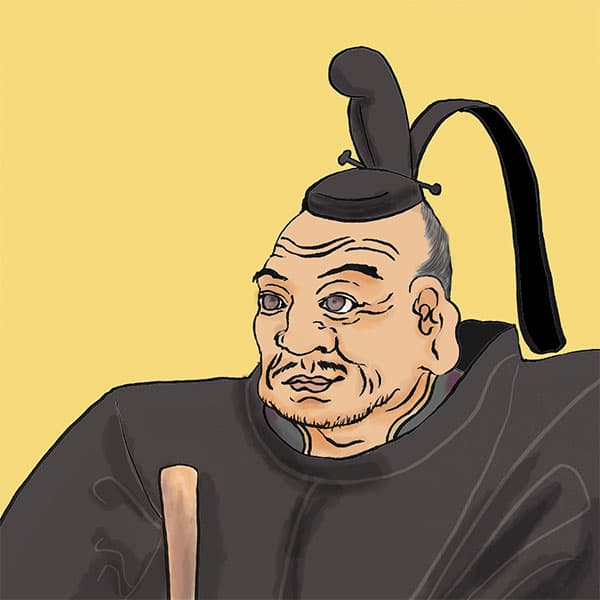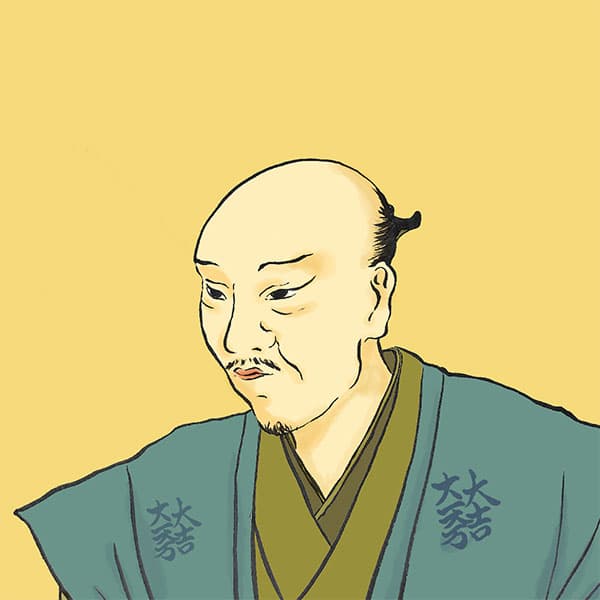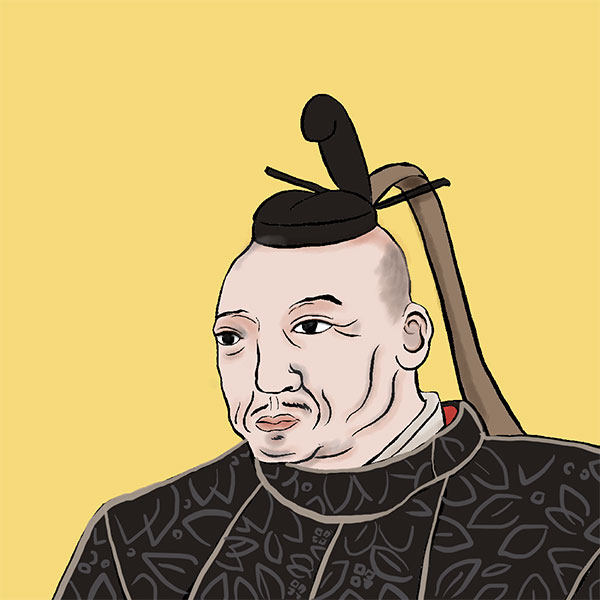Aizu conquest (1/2)The phantom battle that led to Sekigahara

Aizu conquest
- Article category
- case file
- Incident name
- Conquest of Aizu (1600)
- place
- Fukushima Prefecture
- Related castles, temples and shrines

Tsuruga Castle
- people involved
In June 1600, Tokugawa Ieyasu set out to subjugate Kagekatsu Uesugi in Aizu (present-day western Fukushima Prefecture, etc.) because he was suspected of treason. This campaign, known as the Aizu Conquest (Uesugi Conquest), was eventually called off because Ishida Mitsunari and other Western troops raised an anti-Ieyasu army in Osaka. After that, as you all know, Ieyasu won the Battle of Sekigahara and took over the country, but this time I will explain in an easy-to-understand way the conquest of Aizu, which ended in a fantasy.
With Hideyoshi's death, Ieyasu rises to power, defeating Maeda and becoming the de facto leader.
After Toyotomi Hideyoshi died in August 1598, the government was supported by the Five Elders and Five Magistrates. This system was created by Hideyoshi in his later years to stabilize the government by supporting his young successor, Hideyori Toyotomi (who was only 6 years old in the 3rd year of the Keicho era). Toshinaga), Hideie Ukita, Takakage Kobayakawa (after his death, Kagekatsu Uesugi), and the five magistrates were Mitsunari Ishida, Nagamasa Asano, Masaie Nagatsuka, Geni Maeda, and Nagamori Masuda. These 10 people formed the core of the administration.
The difference between Godairo and Gobugyo is that Godairo is the highest authority in the government that decides on important political affairs, consisting of powerful daimyo with over 100,000 koku. On the other hand, the five magistrates, including Mitsunari Ishida, were in charge of practical affairs as Hideyoshi's retainers, and were in charge of judicial, civil engineering, administrative, religious, and financial affairs, respectively.
Ieyasu thought that the Toyotomi government was safe now, but Ieyasu broke the decisions made during the Hideyoshi era and began to move to gain his own advantage and increase his power. In addition to breaking Hideyoshi's rule of ``forbidding arbitrary marriages of feudal lords,'' he married Masamune Date's eldest daughter and his sixth son Tadateru Matsudaira without permission, and also adopted his own adopted daughters with Kiyomasa Kato and Masanori Fukushima. They each married a certain Masayuki Fukushima. When this was discovered in the New Year of 1599, Toshiie Maeda and Mitsunari Ishida heavily criticized Ieyasu. In particular, after Hideyoshi's death, Toshiie tried to keep Ieyasu in check since he was the head of the force that opposed Ieyasu.
However, Toshiie died of illness on Leap March 3, 1599, and there was no one left to stop Ieyasu. Speaking of Toshiie's successor, Maeda Toshinaga, he did not follow Toshiie's will, ``to stay in Osaka as Hideyori's guardian for three years and not to return to Kaga.'' I will return to Kaga.
However, it seems that Toshinaga was planning to assassinate Ieyasu when Ieyasu visited Osaka Castle in September to greet him during the Chongyang Festival. This was eventually discovered by Ieyasu. It is also said that this plan was a lie concocted by Ieyasu in order to get rid of Toshinaga.
Taking advantage of the assassination plan, Ieyasu ignored Hideyoshi's will that ``Ieyasu should stay in Tokyo for three years'' and stayed in the Nishinomaru of Osaka Castle, managing political affairs and increasing his power. In addition, he plans to conquer Kaga against Toshinaga, the mastermind behind the assassination. However, the dispatch of troops was canceled due to Toshinaga's decision to present the Virgin Mary, Hoshunin, as a hostage to Edo. Some researchers say that the Kaga conquest was just a rumor, but it seems certain that there was some kind of conflict between the Tokugawa and Maeda during this period.
Is Kagekatsu Uesugi preparing for a rebellion? The measures taken by Ieyasu
As political strife continued in Osaka, Kagekatsu Uesugi, who owned Aizu (1.2 million koku), was busy preparing his territory. Kagekatsu had a friendly relationship with Toyotomi Hideyoshi, and in 1598, Hideyoshi transferred his fief from Echigo and Sado (Niigata Prefecture) to Aizu as a check on Date Masamune in Oshu and Tokugawa Ieyasu in Kanto, and Tohoku.・It seems to have played a role as a holdout against the Kanto region. By the way, the duo of Kanetsugu Naoe and Mitsunari Ishida were the ones who played an active role in the transfer. The fact that his vassal was on good terms with Mitsunari was also one of the reasons why Kagekatsu joined the Western army.
After attending Hideyoshi's funeral, Kagekatsu returns to Aizu and becomes a shut-in, working on building roads and other infrastructure. In 1600, construction of Kamizashi Castle (Aizuwakamatsu City, Fukushima Prefecture) began as a new base for Aizu. This was because there were concerns that Wakamatsu Castle (in the same city), where the scenic spot was originally located, was close to the mountains and would be difficult to protect and make it difficult to expand the castle town. It seems that they were thinking of developing the same area as a major base. According to one theory, it was a large-scale construction project that required approximately 80,000 people. It was started as part of the preparation of the territory, but was it really a move with an eye to the possibility of fighting Ieyasu in the future?
These movements of Kagekatsu were reported to Ieyasu by Hideharu Hori, the lord of Echigo Province, a former domain of the Uesugi clan. Hideharu entered Echigo on behalf of Kagekatsu, but when Kagekatsu left Echigo, he took away the farmers and the rice tax that was supposed to be left behind, so he was in trouble. Due to a lack of labor, the fields became deserted, and the burden on each peasant increased, causing a revolt. The people of Aizu respected their former lord, Kagekatsu, and Hideharu was afraid that he might rebel at any moment. For this reason, he repeatedly reported Kagekatsu's movements to Ieyasu and expressed his dissatisfaction. In response to this, Ieyasu requests Kagekatsu to go to Kyoto, but Kagekatsu does not come easily.
In addition, Kagekatsu's subordinate, Shinkichi Fujita, betrayed Kagekatsu and ran away to Ieyasu. Shinyoshi originally served the Takeda clan, but later joined the Uesugi clan and rose through the ranks. In January 1600, he congratulated Ieyasu for the New Year on Kagekatsu's behalf, and at that time received silver coins and a sword from Ieyasu. However, this courtesy caused problems within Uesugi, and Kanetsugu, who viewed Ieyasu as an enemy, suspected him of becoming a spy for Ieyasu. For this reason, he ran away and told Ieyasu that ``Uesugi was planning to rebel.''
In April 1600, Ieyasu requested Kagekatsu to come to Kyoto and explain the progress of the new construction of the castle. He had Naoe Kanetsugu's close friend, the monk Saisho Jōkō of Hokoji Temple in Kyoto, write a letter expressing his doubts about Uesugi Kagekatsu and send it to Kanetsugu.
The contents of the letter include that Ieyasu is suspicious that Kagekatsu will not go to Kyoto, and that if he has no intention of rebelling, he would like him to submit an oath to that effect, and that he would like to submit an oath to that effect, as well as the construction of Kamizashi Castle and the White House. The fact that he is constructing roads to the river mouth, collecting weapons in Aizu, and building roads and bridges is being viewed as a problem, and Hori Naomasa, the chief retainer of Hori Hideji, is complaining about Kagekatsu, so it would be better to apologize properly. Okay, in any case, it was better to send Keikatsu to Kyoto right away and give an explanation directly.
What triggered the Battle of Sekigahara? “Naoe” full of irony
The letter that Kanetsugu Naoe is said to have replied to the letter written by Johan Nishisho is the ``Naoe Letter'' dated April 14th. It denied Hideharu Hori's accusations and explained why Uesugi Kagekatsu could not go to Kyoto, but it is said that Tokugawa Ieyasu was so furious with the sarcastic and provocative text that he decided to conquer Aizu.
However, the original version of the Naoe Letter has not been passed down, and there are theories that it is a fake or that it was falsified by later generations based on the wording of the written contents, and it is still a source of controversy. According to research, there are over 20 types of transcripts, each with slightly different content. The oldest copy of Naoe-jo is said to be from 1640 and consists of 16 lines.
To summarize and explain the contents, he first commented on the rumors of rebellion, saying, ``There are rumors flying around between Kyoto and Fushimi, so I'm not worried because I think the rumors are suitable for Kagekatsu, who is far away and young.'' He dismisses it as a rumor.
Regarding the delay in going to Kyoto, Kagekatsu explained that he went to Kyoto in the first place after Toyotomi Hideyoshi died shortly after the change of country in 1599, and only returned to Japan in September 1599. Arriving in Kyoto on New Year's Day in 1600 was a tight schedule, and the question was, ``When should I take control of Aizu?'' In addition, he explains that Aizu has heavy snow, so it is difficult to visit Kyoto from October to March.
Regarding the petition, he said it was unnecessary because it had been issued many times and had become outdated, and said, ``It is unconscionable to suspect Kagekatsu of plotting a rebellion without clarifying the truth or falsehood of the false accusations.'' Hideharu Hori and Ieyasu Blame. In addition, when Ieyasu believed the false statements without any reason without clarifying his deliberations, claimed that Kagekatsu had an intention to rebel, and told him to go to Kyoto if he had no intention of rebelling, ``I was treated like a nursing child and there was nothing I could do about it.'' commented sarcastically. If he inadvertently went to Kyoto while rumors of antipathy spread, he said, ``I would lose the name of Ritsuyoshi, which has been passed down through the Uesugi family, and the pride of my archery.'' ``Even if I go to Kyoto under these circumstances, Ieyasu will judge me to be two-faced.'' He emphasized that he would not return to Kyoto until the repeated false accusations were investigated, and added, ``Whether Kagekatsu is wrong or Ieyasu is two-faced depends on what happens in the world.''
Regarding whether or not to start a rebellion, he said, ``If we disobey Hideyoshi's will, abandon Hideyori, and intervene just because our relationship with Ieyasu has deteriorated, even if we take over the country, we will be known as villains. He explains that he does not rebel because he cannot escape.
Regarding the collection of weapons, ``Samurai in the upper regions have ``tools for socializing'' such as rice bowls, but samurai in rural areas prepare weapons such as guns.The customs of the country are different, so it seems suspicious.'' Don't think so,'' he explains, with a hint of sarcasm. Regarding the maintenance of roads within the territory, he simply said that it was a natural thing to do to avoid inconvenience to people coming and going, and that it was "wrong to make such a fuss about it." He even wrote, ``It would be no trouble to crush Hideharu Hori, who was in Echigo Province and knew everything about him.'' He added, ``Roads are being maintained in all directions, but the only one complaining is Mr. Hori in Echigo.''
In summary, it says, ``There is no point in going to Kyoto while you are under suspicion, so please confirm the truth or falsity of false accusations before requesting to go to Kyoto.If that happens, go to Kyoto.'' In any case, Hideharu Hori and the chief retainer's hatred towards Naomasa Hori is intense, and the conflict between Mr. Uesugi and Mr. Hori seems to be clearly visible in the letter.
Ieyasu decides to conquer Aizu
It is said that upon reading the letter, Tokugawa Ieyasu was furious, saying that it was not a letter to his superiors, and that it was disrespectful, and decided to conquer Aizu on the same day. As mentioned above, the authenticity of the Naoe letter is not certain, but according to "Tokugawa Miki," the Uesugi side sent some sort of reply to Ieyasu's request to go to Kyoto, and Ieyasu saw it and said, ``Arrogant and disrespectful.'' It is written that he was furious and decided to subjugate Aizu.
- people involved

- WriterNaoko Kurimoto(Writer)I am a former travel industry magazine reporter. I have loved history, both Japanese and world history, since I was a child. I usually enjoy visiting temples and shrines, especially shrines, and often do ``pilgrimages to sacred places'' themed around historical figures. My favorite military commander is Ishida Mitsunari, my favorite castle is Kumamoto Castle, and my favorite castle ruins is Hagi Castle. My heart flutters when I see the ruins of battle castles and the stone walls of castle ruins.










